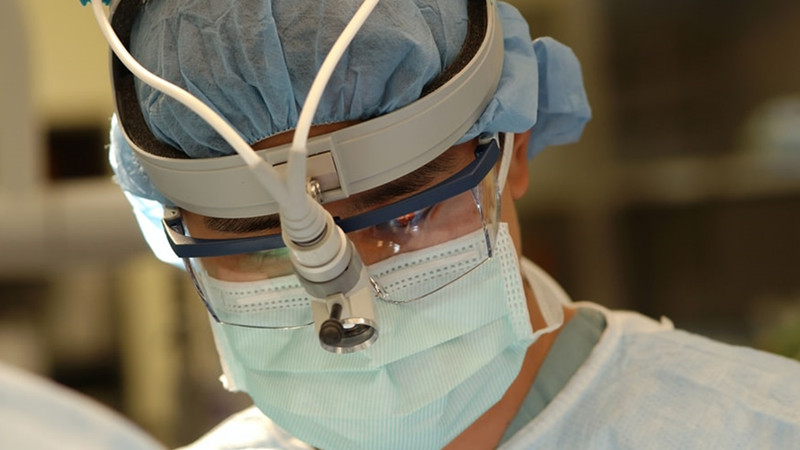The difference between hard mirrors and soft mirrors
Endoscopes can be divided into rigid and flexible endoscopes.
01 Differences in application fields
Generally speaking, the cavity is more suitable for rigid scope, and the tube is more suitable for soft scope. Rigid endoscopes mainly enter sterile human tissues and organs or enter sterile chambers of the human body through surgical incisions, such as laparoscopy, thoracoscopy, arthroscopy, intervertebral discoscopy, ventriculoscopy, etc. Flexible endoscopy mainly completes inspection, diagnosis and treatment through the natural cavities of the human body, such as gastroscopy, colonoscopy, laryngoscopy, bronchoscopy, etc.

However, there is no absolute application field division between soft mirrors and hard mirrors. In some therapeutic areas, there are both soft mirrors and hard mirrors. Such as hysteroscopy, cystoscopy are both flexible and rigid endoscopy. Even rigid endoscopy will develop towards soft endoscopy to a certain extent, such as NOTES (natural orifice endoscopic surgery). NOTES enters the body through the patient’s mouth, vagina, urethra, anus and other natural orifices through a long flexible flexible endoscope, and enters the abdominal cavity and thoracic cavity through the stomach, vagina, bladder, colorectum, esophagus and other organs for surgery. The abdominal wall of the patient was free of surgical incisions and scars, and was pain-free. NOTES is the development direction of minimally invasive surgery.
02 Differences in disinfection methods
The flexible endoscope has a complex design, with many lumens and sinus tracts, long and narrow passages and right-angle turns, which are difficult to clean and sterilize, and the sterilization process is complicated. Because of its special material and fine structure, soft mirrors are generally chemically sterilized because many parts are not resistant to high temperature and high pressure, and are afraid of corrosion. Disinfectants mainly include o-phthalaldehyde, glutaraldehyde, peracetic acid, chlorine dioxide, etc. Different disinfectants and soft lenses for different purposes have corresponding soaking and disinfection times, and manual cleaning and disinfection and special cleaning for endoscopes The time for machine disinfection is also different. The gastroscopes, colonoscopes, bronchoscopes, etc. in the flexible scope are in direct contact with the patient’s digestive tract or respiratory mucosa, and should be disinfected at a high level; while some flexible scopes, such as choledochoscopes and cystoscopes, need to be sterilized because they enter the sterile chamber of the human body. bacterial level. Rigid mirrors enter the human body through the wound and should be thoroughly disinfected and sterilized after each use. Sterilization generally adopts thermal sterilization (hot water is boiled, usually when cleaning in a washing machine, the washing machine program is automatically carried out), and sterilization is generally pressure steam sterilization.
03 The competition barrier of hard mirrors is not as high as that of soft mirrors
Doctors need to master the use of flexible scopes through training. Doctors trained by the manufacturer have strong stickiness to the manufacturer’s flexible scopes, and the host in the flexible scope system cannot be used with other brands of scopes. The hard mirror host can be used with mirror bodies of different brands, and the doctor’s operation level has a great influence. Therefore, the market concentration of soft lenses is higher.
Classification and supporting equipment of hard mirrors
Rigid endoscopy can be divided into laparoscopy, thoracoscopy, hysteroscopy and other categories. Various types of hard mirrors are used in conjunction with supporting equipment to complete the diagnosis and treatment of various types of diseases. The main supporting equipment of hard mirrors include camera system host, camera, cold light source, monitor, trolley, etc.
Application scenarios of hard mirrors
There are many types of hard mirrors, and the application scenarios of various hard mirrors are diverse. Laparoscopy and hysteroscopy represent typical application scenarios of rigid endoscopy.
The process of laparoscopic surgery is as follows: in the operating room, the patient is first anesthetized, and the doctor will make a small opening or hole of about 5-10 mm in the patient’s umbilicus or abdominal wall. Dilation of the abdominal cavity (i.e. pneumoperitoneum) to open up the surgical space to complete the surgical procedure. A laparoscope with a tiny camera is inserted into the abdominal cavity through a small hole, and the image transmission in the abdominal cavity captured by the lens is displayed on a TV monitor. Laparoscopy essentially replaces the doctor’s eyes. Then the doctor analyzes, judges and operates the patient’s condition through the images of the patient’s organs displayed on the screen from different angles. The doctor makes other small holes in the patient’s abdominal wall to allow the relevant laparoscopic surgical instruments to enter the abdominal cavity, so that the doctor can complete the operation. After the procedure is complete, the doctor deflates the abdominal cavity and closes the small hole.
Modern laparoscopic surgery was introduced into my country in the 1990s and has been developed for 30 years. The surgical technique has achieved rapid development. From the beginning, only cholecystectomy can be performed, and now it can basically complete all surgical operations through laparoscopy, including operations on gastrointestinal, liver and gallbladder, pancreas, thyroid, kidney, uterus and other organs, and the application field continues to expand. Laparoscopic surgery is one of the most typical minimally invasive surgical procedures.
Hysteroscopic surgery is a common operation for treating gynecological diseases. The doctor inserts a hysteroscope into the uterus to observe the diseased tissue in the uterus and then performs the operation. Indications for hysteroscopic surgery include removal of the endometrium, submucosal fibroids, endometrial polyps, uterine malformations, intrauterine adhesions, dredging of fallopian tubes, removal of foreign bodies, and treatment of menorrhagia.
Source: On the Mirror
Cheersonic is the leading developer and manufacturer of ultrasonic coating systems for applying precise, thin film coatings to protect, strengthen or smooth surfaces on parts and components for the microelectronics/electronics, alternative energy, medical and industrial markets, including specialized glass applications in construction and automotive.
